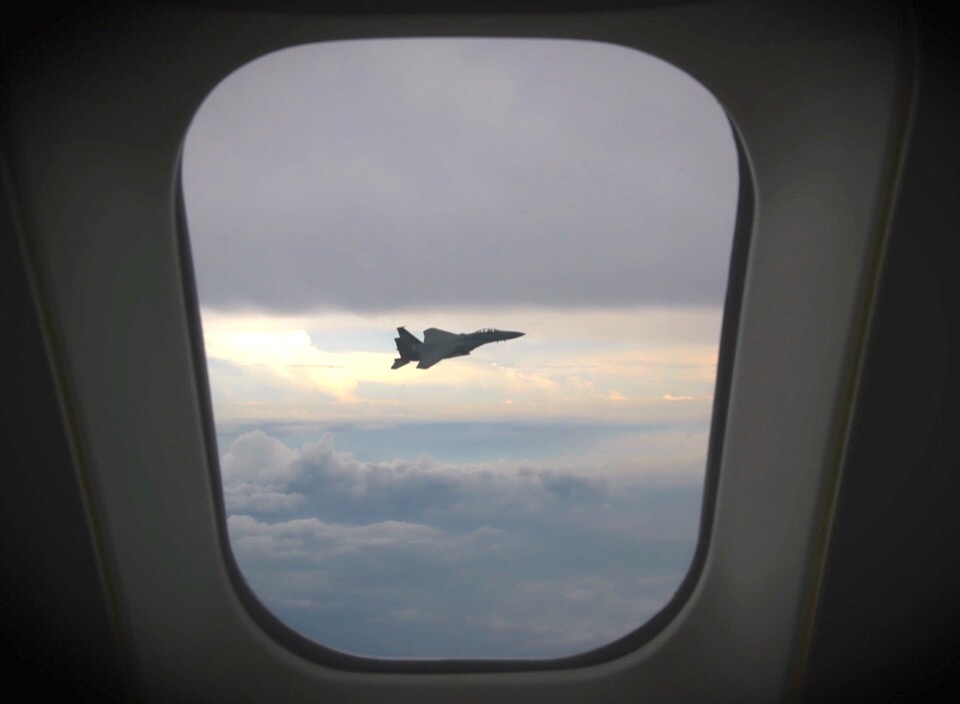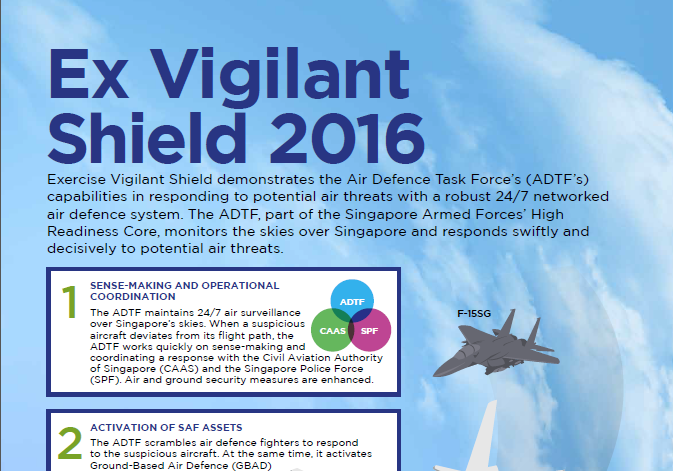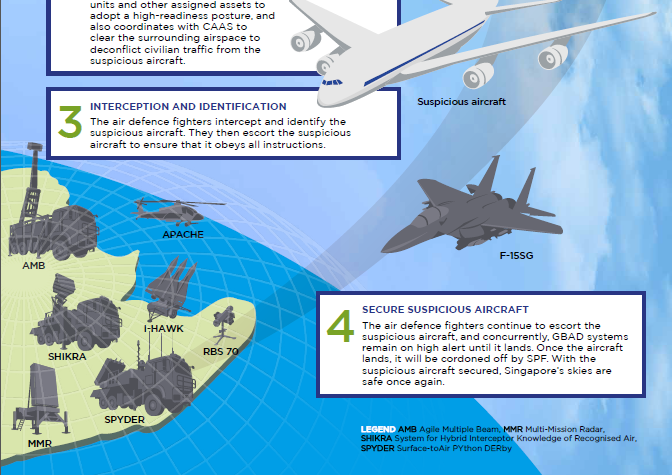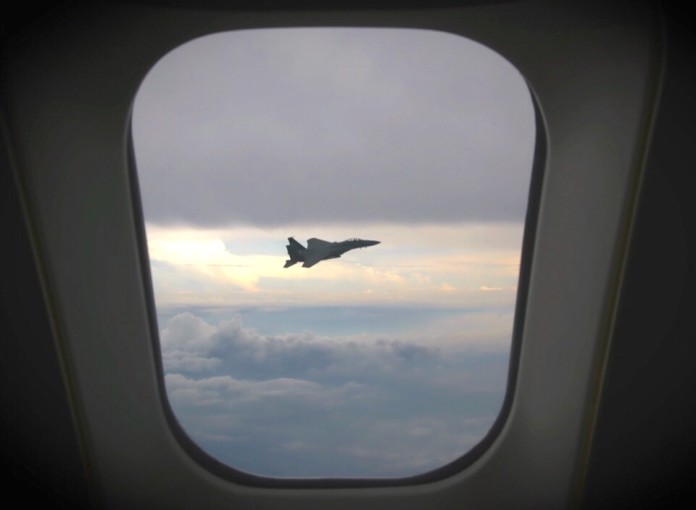SINGAPORE: The Republic of Singapore Air Force (RSAF) detects a wide range of threats on a daily basis and some of the suspicious targets include unidentified aircraft which bear no information on where they are headed.
“Some of these incidents we investigate are linked to potential terror attack categories so we take them very seriously. And when needed, we will activate our air defence responses to deal with them, mostly as a precautionary measure,” Commander of the Air Defence Operations Command, Brigadier General (BG) Tan Chee Wee, said to the media on Monday (Nov 28), after the wrap of the biannual Exercise Vigilant Shield.
The RSAF has been on a heightened air defence alert to thwart terror attacks since the September 11 attacks in 2001.
In 2010, a round-the-clock task force was set up to respond quickly to terror threats. Air Defence Task Force (ADTF), together with the Special Operations Task Force, Island Defence Task Force and Maritime Security Task Force, make up the High Readiness Core that safeguard homeland security, Singapore’s skies and waterways.
Not all incidents, however, will lead to the scrambling of the RSAF fighter jets. “Our air defence team is always looking for potential deviations of traffic in our vicinity,” said BG Tan, who is also the Commander of the Air Defence Task Force. As an air hub, Singapore sees about 1,000 arrivals and departures on a daily basis, said BG Tan.

(Photo: Xabryna Kek)
SIMULATED HIJACKING SCENARIO
In the wee hours of Monday morning, two RSAF F-15SG fighter jets were scrambled to intercept a “suspicious airliner” at about 2.10am in a simulated hijacking scenario as part of the RSAF’s Exercise Vigilant Shield.
RSAF’s KC-135, playing the part of the suspicious civilian airliner, was flying the South China Sea when it began to deviate from its intended flight path. In a matter of minutes, RSAF fighter jets were activated to escort the suspicious civilian plane, which was placed on red alert.
“You’ve been intercepted by the Republic of Singapore Air Force Fighters,” a RSAF fighter pilot said through the radio channel. “You’re to comply with all instructions. Acknowledge.”
The air defence exercise is meant to demonstrate the ADTF capabilities in responding to potential air threats round-the-clock with a robust networked air defence system.
The KC-135 aircraft was chased through the Singapore skies by RSAF fighter jets for more than an hour, before being forced to land at Changi Air Base at 3.30am.
When fighter jets scramble to intercept a suspicious airliner, there is standard procedure to follow, as defined by the International Civil Aviation Organisation (ICAO). These procedures include radio communication or visual signals in night and day situations.
For instance, in a 10 o’clock and 2 o’clock position, fighter jets rock their wings to establish communications with the suspicious plane, signalling interception. The jet in question will then repeat the action, indicating that its pilots have understood the situation and will comply.

Said Chief of Air Force, Major-General (MG) Mervyn Tan: “The successful conduct of this exercise shows that we have a robust networked air defence system and our tight inter-agency linkage with our partners. The RSAF will continue to strengthen our ability to defend and safeguard the sovereignty of Singapore’s airspace.”
The last time RSAF fighter pilots were activated to intercept a civilian aircraft was in 2008, when a small Australian-registered airplane intruded into Singapore air space. Two Australians were on board the Cessna 208 which did not have an approved flight path.
This year’s exercise involved about 400 participants from the RSAF, the Civil Aviation Authority of Singapore and the Singapore Police Force. The RSAF also deployed assets such as the F-15SG fighter aircraft, AH-64D Apache helicopter, I-HAWK, SPYDER and RBS-70 Ground-Based Air Defence systems.





